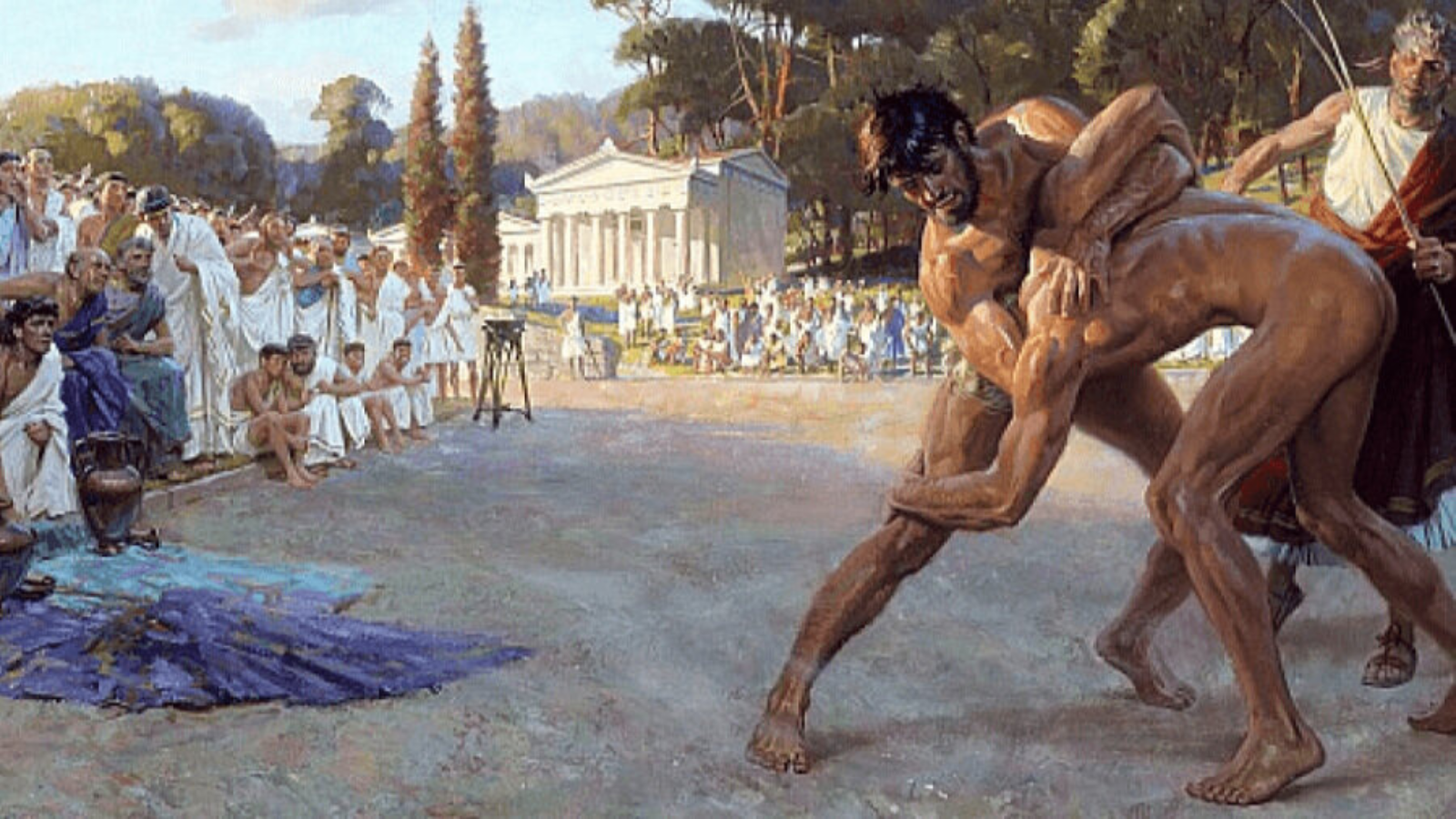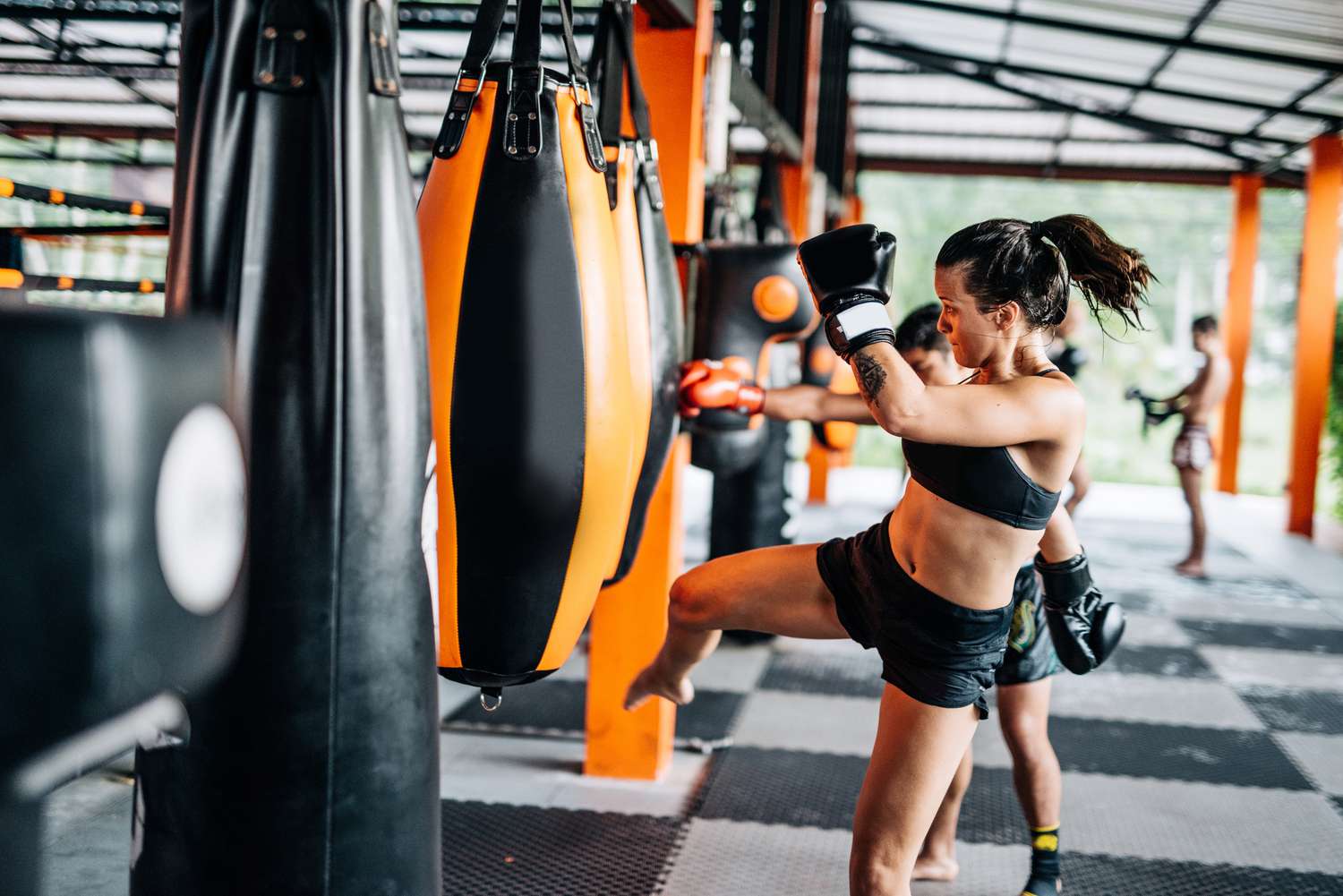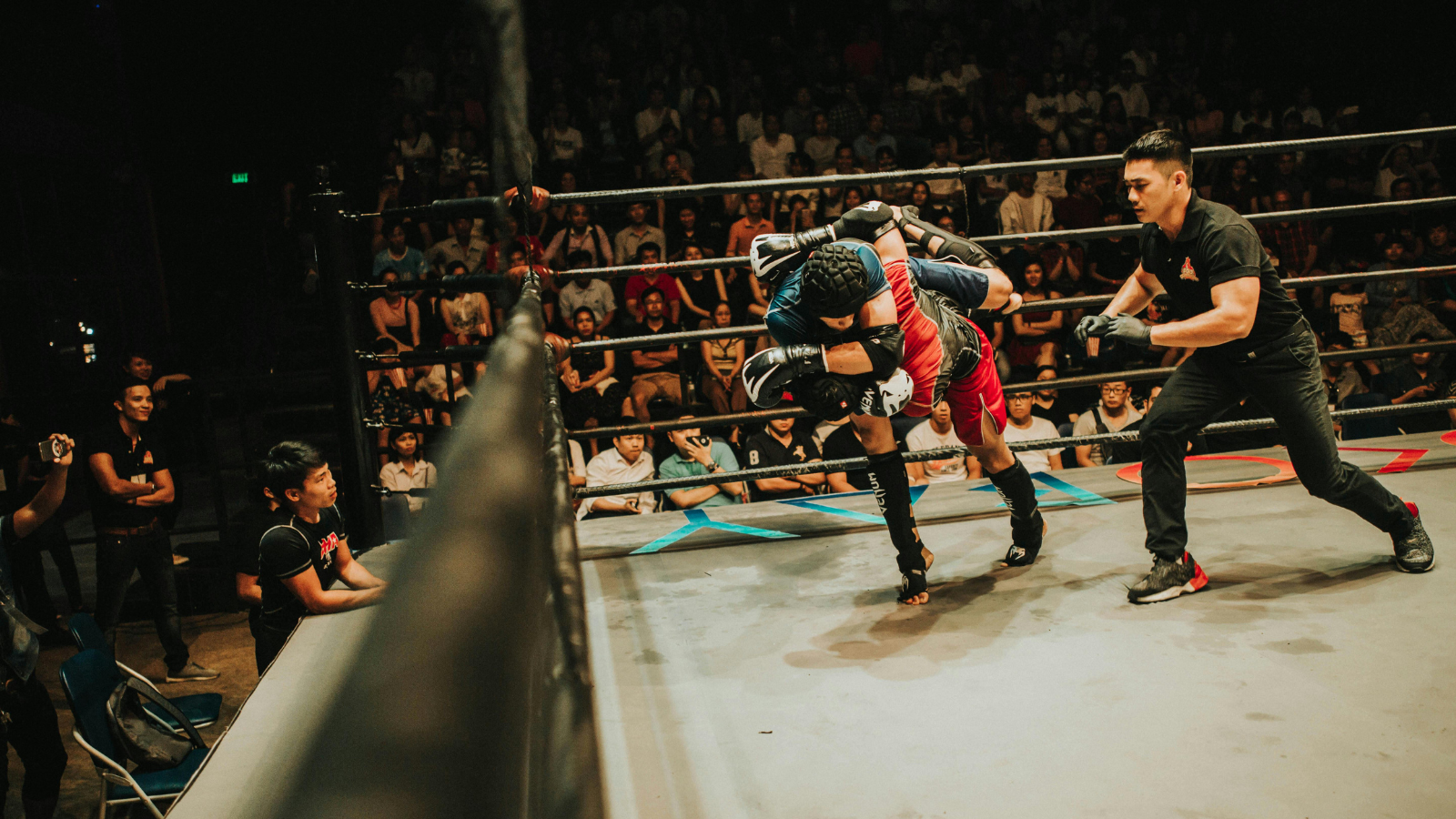Complete Guide for Beginners
What is MMA?
MMA / Freestyle fighting
Have you ever wondered what happens when the world's best fighters from different disciplines go head-to-head? Welcome to the world of MMA! MMA (Mixed Martial Arts) is an explosively popular full-contact combat sport that combines elements of many different fighting styles - from boxing and wrestling to Brazilian jiu-jitsu and Muay Thai. It is also often referred to as sportive freestyle fighting, emphasising its regimented and athletic nature.
If you're new to this exciting sport, you've come to the right place. This in-depth guide is designed just for you, to explain everything you need to know about MMA, mixed martial arts and its nature. From the basics of the sport and the rules, to the main fighting styles and well-known organisations, we cover everything you need to know to understand why mixed martial arts is so appealing to so many people.
Let's go together to discover the world of MMA!
What is MMA? Basics
Definition and Nature
Mixed martial arts is not actually a new phenomenon. Its roots go back to ancient history; for example, pankration, which was part of the ancient Greek Olympic Games, was similar to modern MMA, allowing most strikes and grappling techniques. Also, "Vale Tudo" (Portuguese for "anything goes"), popular in Brazil in the early 20th century, was an early form of Mixed Martial Arts where fighters from different styles competed against each other. However, the birthplace of modern MMA is often considered to be the United States in the early 1990s, with the creation of the Ultimate Fighting Championship (UFC). Originally, the UFC was conceived as a tournament to determine which fighting style was the "strongest." However, over time, Mixed Martial Arts has become an increasingly regulated and professional sport. Today, MMA is globally popular, with fighters honing their skills in several different disciplines to be competitive at the highest level. This evolution has transformed MMA from a purely style-versus-style confrontation into a tactically complex and strategic sport mixed martial arts.

MMA History at a glance
However, the birthplace of modern MMA is often considered to be the United States in the early 1990s, with the creation of the Ultimate Fighting Championship (UFC). Originally, the UFC was conceived as a tournament to determine which fighting style was the "strongest." However, over time, Mixed Martial Arts has become an increasingly regulated and professional sport. Today, MMA is globally popular, with fighters honing their skills in several different disciplines to be competitive at the highest level. This evolution has transformed MMA from a purely style-versus-style confrontation into a tactically complex and strategic sport mixed martial arts.
MMA rules and how to fight
Fighting ring and equipment
Most MMA, or Mixed Martial Arts, matches are held in a specially designed ring, often called a cage or "octagon" (in English, octagon), as it typically has eight sides. The cage is a safe environment that is padded and enclosed by netting to keep the fighters inside.
To ensure the safety of the fighters, certain equipment is mandatory in mixed martial arts. The main elements are:
- MMA Gloves: Unlike regular boxing gloves, these are smaller and thicker, allowing both punching and grappling.
- Mouth protection: Protects teeth and mouth from injury.
- Groin protective cup: Mandatory for male fighters.
In addition, competitors may wear shorts without pockets or metal parts.
Permitted and Prohibited Activities
01
Strikes
With fists (boxing), with legs (kickboxing, Muay Thai), with knees (Muay Thai), and with elbows (Muay Thai) to certain areas.
02
Submission techniques
Various holds and locks with which one can force the opponent to submit (for example, arm lock, leg lock, choke).
03
Wrestling
Various throws and takedowns to get the opponent to the mat.
Winning ways
Mixed Martial Arts matches can end in several different ways:
- Knockout (KO): When a fighter receives a blow that causes them to lose consciousness and is unable to continue.
- Technical knockout (TKO): If the referee decides that one fighter can no longer effectively defend themselves, even if they have not lost consciousness. This can be caused by, for example, a constant barrage of strikes, an injury, or the inability to continue. Sometimes, the doctor may also stop the match if the fighter is not able to continue for health reasons.
- Submission: When a fighter taps (either with his hand against the mat or opponent, or verbally) to indicate that he has been defeated by a painful grip or stranglehold.
- Judges' Decision (Decision): If all rounds are completed and neither fighter has won by knockout or submission, the three judges will decide the winner on points. The judges will score each round separately, taking into account striking, wrestling, control and aggressiveness.
- Disqualification: If one of the fighters commits a prohibited action and the referee decides to disqualify him, the other fighter wins.
- Doctor Stoppage: If during the match one fighter is injured and the ring doctor decides that he is unable to continue, the other fighter will be declared the winner (or if the injury was caused by an illegal action, the decision may be different).
Tracks and Timetable
Usually, one MMA match consists of three five-minute rounds, with a one-minute break between them. However, title matches can last up to five rounds. After each round, the judges evaluate the fighters' performance.
Main MMA Fighting Styles
Most MMA, or Mixed Martial Arts, fighters are not just "street brawlers." They have often trained for years in various fighting styles to hone their skills both for stand-up fighting and on the ground. Successful mixed martial arts requires versatility and the ability to adapt to different situations. Here is an overview of some of the main fighting styles that MMA fighters use:
Boxing
Boxing is one of the cornerstones in MMA, especially in stand-up fighting. It focuses primarily on hand strikes (jabs, cross, hooks, uppercuts) and footwork to maintain distance and maneuver. A good boxer can effectively attack the opponent from a distance and protect their head. Many successful mixed martial arts fighters have started their careers as boxers or have significantly developed their boxing technique.
Well-known boxers in MMA: Conor McGregor, Holly Holm
Wrestling
Wrestling is an extremely important element in MMA, especially for controlling the fight and taking the opponent down. Various wrestling styles, such as freestyle wrestling and Greco-Roman wrestling, teach fighters how to take their opponent off balance, pin them down, and control them in ground fighting. A good wrestler can dictate where the fight takes place – whether standing or on the ground – and this gives them a significant advantage.
Well-known wrestlers in MMA: Khabib Nurmagomedov, Daniel Cormier.
Brazilian Jiu-Jitsu (BJJ)
Brazilian jiu-jitsu is the art of ground fighting that focuses on submission techniques (such as arm locks, leg locks, and chokes) and positional control. BJJ teaches how to be effective even when you are on your back on the ground, and how to force the opponent to submit. Many mixed martial arts matches end with a BJJ technique, which is why this style is essential in MMA.
Muay Thai (Tai Poks)
Muay Thai, which is often called “the art of eight limbs,” is a fighting style originating from Thailand that uses strikes with fists, legs, knees, and elbows. It is a very aggressive and effective style in stand-up fighting, and many MMA fighters use Muay Thai techniques in their arsenal. In particular, Muay Thai strikes are very powerful and can end a match quickly.
Kickboxing
Fighters with a well-known kickboxing background in MMA: Israel Adesanya, Alex Pereira.
Other Important Styles (in brief)
In addition to the aforementioned, there are also other fighting styles that MMA fighters use and draw inspiration from:
- Taekwondo: Known for its high and varied footwork.
- Karate: A traditional Japanese fighting style that emphasises both strikes and blocks.
- Judo: Focuses mainly on throws and takedowns, but also includes some submissions.
Top-level mixed martial arts often shows how fighters have managed to combine different styles to create their own unique and effective way of fighting.
How to Follow and Understand MMA
Now that you know the fundamentals and main fighting styles of MMA, or mixed martial arts, it's time to talk about how to follow and better understand this exciting mixed martial arts.
Main MMA Organisations
Just like in any sport, MMA also has its main organizations that organize competitions and where the world's best athletes compete. Some of the most well-known of these are:
- Ultimate Fighting Championship (UFC): Often considered the largest and most prestigious organization in the MMA world. Many world-famous Mixed Martial Arts fighters compete here. The UFC has specific rules and weight categories and regularly organizes major events around the world.
- Bellator MMA: The second-largest MMA organization in North America, which also offers high-level mixed martial arts.
- ONE Championship: Asia's largest MMA organization, known for its diverse roster of fighters and the integration of various combat sports (including Muay Thai and kickboxing).
- Other important organizations: There are also many other regional and international MMA organizations that contribute to the sport's development.
If you want to follow MMA, it's a good idea to start by watching the events of these larger organizations. You can find information about upcoming matches, fighters, and rules on their websites.
What is MMA? Important Terms and Slang
Like any sport, Mixed Martial Arts also has its own specific terminology. Knowing these terms will help you better understand what is happening during a match and how fighters try to outsmart each other. Here are some of the most important terms that are worth knowing as a beginner:
Takedown
Taking an opponent down from an upright position to the ground.
Ground and Pound
A fight on the ground where the fighter on top hits the opponent below.
Submission
Submission technique used to force an opponent to submit (e.g. handcuff, leglock, manacle).
Sprawl
A wrestling move that seeks to avoid taking down an opponent by keeping the feet behind and the body's centre of gravity low.
Guard
A position in ground fighting where one fighter is on his back and keeps his legs around the opponent's upper body to control and attack him.
Mount
A dominant position in ground fighting, with one combatant sitting on the opponent's stomach.
Striking
Use of striking techniques in standing fighting.
Clinch
Close grappling while standing up, often with the aim of taking the opponent down or attacking with knees and elbows.
How to analyse the fight
Watching a mixed martial arts match can be much more than just a fight between two people. If you learn to look at the details, you can notice a lot of strategy and tactics. Here are some things to pay attention to:
- Fighting Styles: Is one fighter mainly a striker and the other a grappler? How do they try to exploit their strengths and hide their weaknesses?
- Strategy: Is the fighter trying to keep his distance and strike, or is he trying to take the fight to the ground? How do they adapt to the opponent's actions?
- Pace and Resilience: Which fighter can keep the pace better? Are they getting tired?
- Position control: Especially in ground fighting, it is important who is on top and can control the position.
- Injuries: Note whether a fighter has been injured and how it affects his fight.
Over time and by watching more matches, you will start to understand the nuances of MMA better and will be able to appreciate the fighters' skills and strategies.
Do you want to take up MMA yourself?
If you are so enthusiastic about MMA, or mixed martial arts, that you are considering starting to practice it yourself, then that is an excellent decision! Mixed martial arts is a fantastic way to improve your physical fitness, boost your self-confidence, and learn new skills. Here are some tips on how to start:
How to Find a Suitable Sports Club
Choosing the right gym is very important at the beginning of your MMA journey. Here are some things to keep in mind:
- Qualified Trainers: Find out if the club has experienced and licensed coaches who are competent to teach different types of sport. mixed martial art disciplines (boxing, wrestling, BJJ, etc.).
- Multifaceted training programmes: Make sure the club offers training for beginners and advanced players, and that you can learn different skills. MMA styles.
- Secure Environment: The club should be clean, well-equipped and safe for training. Find out if first aid facilities are available and if safety is a priority during training.
- Trial training: Most clubs offer the opportunity to take part in a trial training session. Take advantage of this opportunity to see if the club and training style are right for you.
- Atmosphere: Do you feel comfortable and welcome at the club? A friendly and supportive atmosphere is important, especially at the beginning.

What to Expect in Beginner Training sessions
- Heating: You will start with light cardio exercises and stretches to prepare your body for the workout and prevent injuries.
- Technique Learning: Trainer teaches different mixed martial art basic techniques of the styles (kicks, blocks, throws, grabs). In the beginning, the focus is often on correct form and basic techniques.
- Drills: Practise the learned techniques with a partner in a controlled and safe environment.
- Sparring (Advanced): When you're sufficiently advanced, you can start taking part in sparring, a simulated fight where you can test your skills in a real-life situation. Beginners don't have to start sparring straight away.
- Conclusion: The workout ends with stretching and relaxation exercises.
Be prepared for a lot of new information at the beginning, and the physical workload may be unusual. Be patient and consistent!
Equipment needed for beginners
When you start MMA-you need some basic equipment:
- MMA Kindad: Exercise gloves are sufficient at first.
- Take by mouth: Mandatory safety equipment to protect your teeth.
- Hand ties: Help support and protect your wrists during impacts.
- Sporty clothes: Comfortable clothes that allow you to move freely (for example, shorts and a T-shirt or rashguard).
- Cubic protection (for men): Essential safety equipment.
Over time, as you progress, you may need other equipment such as shin guards and head guards.
Safety tips for beginners
Safety is mixed martial art a priority in training. Here are some important tips:
- Listen to your body: If you feel pain, stop and rest. Don't push yourself too hard, especially in the beginning.
- Do proper warm-ups and stretches: This helps prevent injuries.
- Learn the right technique: Correct technique is important for both efficiency and safety. Listen to your coach and ask questions.
- Don't be afraid to ask for help: If you don't understand something or need help, feel free to ask a coach or an experienced training partner.
- Be careful when sparring: When you start sparring, do it in a controlled way and according to your level. Don't go full steam ahead straight away.
- Be consistent: Regular training is the key to progress.
MMA-can be a very rewarding experience. Be open to learning, be patient and enjoy the journey!
Summary
We hope this comprehensive guide has given you a clear overview of what is involved in. MMA or Mixed martial arts. We've covered the nature of the sport, its history, the rules, the main fighting styles, as well as tips on how to follow it and even how to get involved. Sportive freestyle is a varied and exciting sport that requires both physical and mental strength and constant learning. Whether you are interested in following the sport or training yourself, we hope this guide has been a useful guide for you. MMA World. Keep exploring and enjoy this dynamic sport!
Now that you're mixed martial art familiar with the basics, you may have additional questions or want to delve deeper into a specific topic. Here are some links that may help you:
- Want to find out more about a specific fighting style or fighters? Check out our in-depth articles about the following fighters Islam Makhachev and Merab Dvalishvili.
- Looking for an MMA gym near you? Read our guides: MMA training in Tallinn and MMA training in Tartu.
- Stay up to date with the latest MMA news and events by reading our MMA Blog.
Thank you for reading our beginner's guide to MMA! We hope to see you back on “mmaailm.ee” soon, discovering new and exciting articles.

